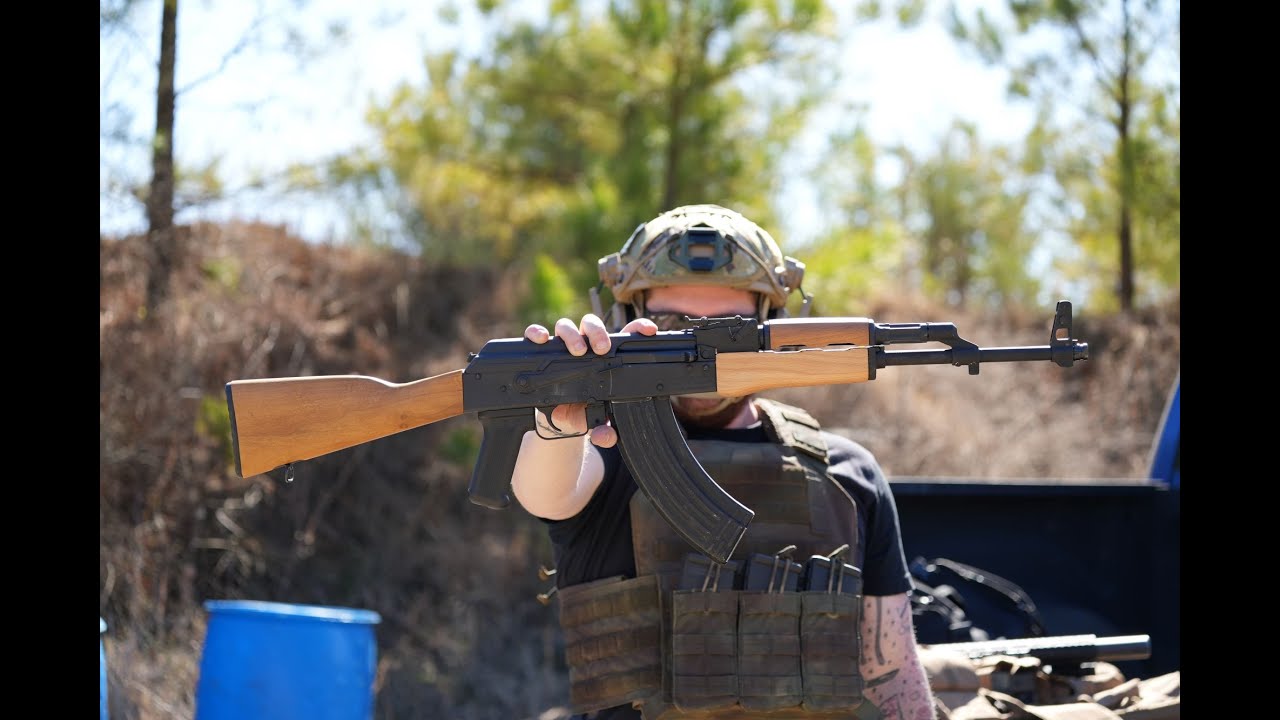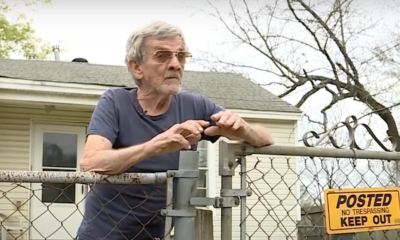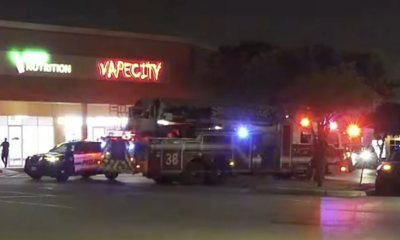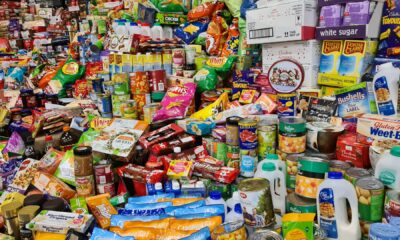Survival Stories
Captain Hayes’ Successful 10-Day Arctic Survival Journey

In the frigid expanse of the Arctic, where survival is not merely a choice but a daily battle, Captain Hayes found himself in the midst of a life-altering challenge. It was a test of his physical endurance, mental fortitude, and his ability to adapt to the harshest of environments. This is the story of how Captain Hayes conquered the brutal Arctic and emerged victorious after ten grueling days.
The journey began as Captain Hayes set out on an expedition to study the effects of climate change in this remote region. Equipped with years of experience and a deep respect for nature’s unpredictability, he was prepared for the worst. Little did he know that the worst was exactly what he was about to face.
As they ventured deeper into the Arctic wilderness, the weather took a turn for the worse. Unrelenting blizzards and bone-chilling temperatures swept through the icy landscape, forcing Captain Hayes and his team to hunker down and brace themselves for the long haul. Their supplies, carefully calculated for the initial duration of the expedition, were rapidly depleting, leaving them with a desperate need for sustenance.
With only their wits and limited resources at their disposal, Captain Hayes and his team immediately shifted their focus to survival. They oriented themselves with the aid of compasses, maps, and their extensive knowledge of the area’s geography. Building a makeshift shelter was their first priority, providing them with a haven from the relentless cold and harsh winds. By utilizing natural materials such as ice blocks and snow, they managed to construct a refuge that would shield them from the elements.
Food became a growing concern as the days went by. With no wildlife in sight and limited provisions, Captain Hayes knew they had to get creative with their sustenance. He led his team in the art of ice fishing, using specially crafted spears to catch fish beneath the thick layer of ice. Every successful catch was a small victory that bolstered their spirits and provided them with much-needed nourishment.
Water, another essential element for survival, posed another challenge in this frozen landscape. Captain Hayes taught his team the importance of melting ice or snow to obtain drinking water. He emphasized the need for safe water storage and the dangers of hypothermia. It was a constant battle to keep their bodies hydrated and protected from the unforgiving cold.
Day after day, Captain Hayes led his team with unwavering determination. They rationed what little food remained, scraping the very bottom of their reserves. The cold gnawed at their bodies, and fatigue threatened to overtake them. But Captain Hayes refused to give in to despair.
Finally, on the tenth day of their ordeal, a break in the weather allowed for a helicopter rescue. Exhausted but alive, Captain Hayes and his team were lifted from the clutches of the Arctic wilderness and brought back to civilization. The triumph of their survival was a testament to their unwavering spirit and the extent of human resilience.
Captain Hayes’ harrowing journey through the Arctic teaches us invaluable lessons about the importance of preparation, adaptability, and ingenuity in the face of nature’s most extreme challenges. It underscores the significance of acquiring survival skills, knowledge of one’s environment, and a never-give-up attitude.
As we follow in Captain Hayes’ footsteps, we should remember that survival is not guaranteed, but through careful planning, resourcefulness, and a strong, unwavering spirit, the human capacity to overcome nature’s trials can be extraordinary. Let Captain Hayes’ story be a beacon of hope and inspiration in our own encounters with the unpredictable forces of the wild.
In the spirit of Captain Hayes, let us embrace the adventure of survival, and may it fuel our determination to conquer the unknown and thrive in even the harshest corners of our awe-inspiring world.

Survival Stories
Lost and Found: GPS Technology in Wilderness Rescues

As someone who’s spent a fair bit of time in the great outdoors, I’ve learned a thing or two about the importance of navigation. Now, I’m not talking about the kind you use to find the nearest gas station on a road trip. I’m talking about the kind that can mean the difference between life and death when you’re stranded in the wilderness. And in this day and age, that means understanding GPS technology.
GPS, or Global Positioning System, is a network of satellites that orbit the Earth, transmitting signals that can be picked up by devices on the ground. These signals are used to calculate the device’s exact location, anywhere in the world. It’s a powerful tool, and it’s revolutionizing the way we approach wilderness rescues.
When you’re lost in the wilderness, every minute counts. The longer you’re exposed to the elements, the greater your risk of hypothermia, dehydration, and injury. Traditional search and rescue methods can take hours, even days, to locate a lost individual. But with GPS, rescuers can pinpoint a person’s location in a matter of minutes.
GPS technology is not just about speed, though. It’s also about accuracy. In dense forests or rugged mountain terrain, it’s easy for rescuers to miss a person, even if they’re just a few feet away. But with GPS, they can zero in on a person’s exact location, reducing the risk of a missed rescue.
But here’s the thing: GPS technology is only as good as the device it’s used on. That’s why it’s so important to have a reliable, high-quality GPS device when you’re venturing into the wilderness. And no, I’m not talking about the GPS on your smartphone. While that might be fine for city navigation, it’s not designed to withstand the rigors of the great outdoors.
When choosing a GPS device, there are a few key features to look for. First and foremost, it should be rugged and waterproof, able to withstand drops, dust, and water. It should also have a long battery life, as you never know how long you’ll need it. And it should have a clear, easy-to-read display, so you can quickly and easily read your coordinates, even in harsh lighting conditions.
Another important feature is the ability to send and receive messages. Some GPS devices come equipped with two-way satellite communication, allowing you to send an SOS signal and communicate with rescuers in an emergency. This feature can be a literal lifesaver, enabling you to convey vital information about your condition and situation.
It’s also worth considering a device with mapping capabilities. Detailed topographic maps can help you navigate unfamiliar terrain and plan the safest route. And with some devices, you can even download maps and updates via satellite, so you’re always equipped with the most up-to-date information.
But remember, while GPS technology is an incredible tool, it’s not a substitute for knowledge and skills. You should still learn how to read a map and compass, understand basic survival skills, and know what to do in an emergency. Because when it comes down to it, technology can fail, but your knowledge and skills can’t.
So, whether you’re a seasoned adventurer or a weekend hiker, don’t underestimate the power of GPS technology. It could be the difference between being lost and being found. But remember, it’s just a tool. The real key to survival is you.
Survival Stories
Unmasking WASR-10: Affordable, Reliable AK Variant Review

The world of AK variants is as diverse as it is contentious, with every gun enthusiast seeming to have a firm opinion on which model reigns supreme. Among the cacophony of voices, one recommendation often rings out: “Just get a WASR!”
The Romanian-made WASR series has carved out a niche in the U.S. imported firearms market, often hailed as the gold standard of affordable AKs available in the country. Century Arms, one of the largest firearms importers in the U.S., attributes much of its success to the “massive demand” for the WASR.
The question that remains is whether the WASR lives up to its legendary reputation. Is it the go-to AK variant for those on a budget? To answer these questions, we’ll delve into our experiences with the rack-grade WASR-10 in 7.62×39, from firing and handling to a thorough inspection by a qualified AK gunsmith.
The WASR series, imported by Century Arms, is built by Cugir Arms Factory in Cugir, Romania. The factory has a rich history, evolving from an iron-processing facility established in 1799 in the hills of Transylvania. The WASR-10 is essentially a semi-automatic version of the Pistol Mitralieră model 1963 (PM md. 63), a licensed version of the Soviet AKM. With its simple wood furniture and well-known design, these Romanian rifles are a no-frills variant of the AKM.
The WASR we have today is the result of years of improvements. One of the most significant upgrades is the elimination of “trigger slap” in current models through an aftermarket trigger. This issue, which involves the bolt slapping back into the hammer as it travels, impacting the disconnector/trigger and snapping it back into the shooter’s trigger finger, is thankfully uncommon in modern AKs like the current WASR-10 offerings from Century.
Before testing, we had local AK expert Josh from Copperhead USA in Tempe, Arizona, inspect our WASR. It’s important to remember that AKs often require real gunsmithing, unlike other platforms where swapping internal components is relatively straightforward. AK tolerances can vary greatly, even from the same factories at different times. If you’re considering delving deeper into the AK platform, investing time and money in learning to be competent rather than just enthusiastic is well worth it.
Our WASR-10 was in good shape when we unboxed it, as expected from a basic imported AK. However, AKs require many parts to be pressed and/or riveted together, and if done incorrectly, it can lead to serious issues down the line. Josh checked the headspace, as it’s possible for an AK to fire out of battery, which can cause serious problems. Our WASR was found to have good headspace after appropriate gauging. Josh also noted that it had a tight chamber, which we’ll discuss later. It’s not uncommon to find a canted (i.e., tilted) front iron sight post on an imported AK, but luckily, our WASR’s sights were fine.
The rest of the issues were purely cosmetic, but it’s important to have some knowledge of the platform to make those distinctions. The gas block was slightly canted, and the slant brake muzzle device didn’t sit flush on the muzzle due to the detent retaining it being slightly too long. It appeared the bolt carrier had been dropped at some point, as there was a small ding on the top of the carrier just forward of the recoil spring assembly. The safety was also remarkably tight, even after bending it out, which is another common issue with many AKs.
The wood furniture was nothing special; in fact, it even manifested some unexpected issues during testing. The trigger was a typical spongy AK trigger with a tactile reset and a curved bow. Based on everything we saw, this wasn’t a cherry-picked rifle and is a good measure of what you can expect from a WASR-10.
Testing was straightforward — the best way to test a new rifle is to fire it. In particular, firing an AK with a tight chamber helps fit the bolt to the chamber, reducing that issue. We loaded 500 rounds of Red Army Standard steel case 7.62×39 ammo into four different types of mags for our break-in range day. These included US PALM AK30R magazines, XTech MAG47 polymer magazines with steel locking lugs, Magpul MOE magazines, and Bulgarian steel 30-round mags from GunMag Warehouse.
The first mags of all four types presented no issues. However, the second XTech mag failed to feed on the last round, which also set the bullet back in the casing far enough to make us discard that round. Other than that, the only magazine issue we experienced was difficulty seating them, which is a combination of needing to break in the mag release lever and the mags themselves.
As we fired round after round, the rifle’s entire barrel and handguard were rippling with heat and smoke, but it kept going. After firing 500 rounds of steel-case ammo in less than 30 minutes during our aggressive break-in test, the WASR-10 held up remarkably well. Sure, it had a few minor issues out of the box, but most were purely cosmetic, and none would be insurmountable without a minor repair or continued use to break in the components.
With an MSRP of $1,070, the WASR-10 from Century Arms isn’t the cheapest AK you can buy, but it remains one of the best value-for-money options on the market. If you’re shopping for your first AK or simply want a reliable, durable rifle, it’s worth considering. However, if you’re expecting a flawless finish, 1 MOA accuracy, and the ability to add a modern sighting system without purchasing an aftermarket mount, you might want to consider a different AK or even a different platform altogether.
AKs continue to be a staple of the American firearms market, even as prices rise. If you’re looking for an affordable, reliable, and fun-to-shoot AK, the WASR-10 from Century is a solid choice. As it turns out, its reputation is well-deserved.
Our Thoughts
The WASR-10 is indeed an interesting piece of hardware. Its reputation as a budget-friendly yet reliable AK variant is well-earned, as our experience suggests. The Romanian roots and the long history of the Cugir Arms Factory lend an air of authenticity that is hard to ignore.
The AK platform is not without its challenges, as indicated by the need for real gunsmithing. That said, the WASR-10 seems to have overcome many of these issues, thanks to years of improvements. The elimination of the “trigger slap” is a significant enhancement, making the WASR-10 a more user-friendly option for AK enthusiasts.
We appreciate the thorough inspection by our local AK expert, Josh. It’s a reminder that a well-built AK requires careful assembly and the right expertise. The WASR-10 passed the test with flying colors, only showing minor cosmetic issues that don’t affect its functionality.
The WASR-10’s performance during testing was commendable, holding up well despite the aggressive break-in test. This robustness, coupled with its affordability, makes it an attractive option for those seeking a reliable AK variant.
It’s worth noting that the WASR-10 isn’t for everyone. If you’re after a flawless finish, pinpoint accuracy, or the ability to add a modern sighting system without additional expenditure, you might want to look elsewhere. However, for those seeking an affordable, reliable, and enjoyable AK experience, the WASR-10 is a solid choice, and its reputation is well-deserved.
Let us know what you think, please share your thoughts in the comments below.
Survival Stories
Master Urban Defense: Learn from History And Prepare for Future Wars

In the intricate dance of contemporary warfare, the urban landscape often serves as the stage. The past and present suggest that future conflicts will inevitably seep into the arteries of our cities, necessitating a deep understanding of urban defense strategies. This notion is investigated by John Spencer and Jayson Geroux of the Modern War Institute at the West Point Military Academy. They assert, “if leveraged effectively, a solid urban defense can decisively tip the scales of war.”
Urban environments are complex mazes of buildings, streets, and alleys, creating a unique battlefield that differs greatly from open fields or forests. Historic urban battles, such as the renowned Battle of Stalingrad or the struggle for Mosul, provide valuable lessons on effective urban defense. The key lies in preparation, strategic planning, and the ability to swiftly adapt tactics as situations evolve.
Narrow urban pathways, such as alleys, can serve as choke points, disrupting the advance of an enemy force and potentially providing an opportunity to employ massing effect strategies.
When devising a defense strategy for a city, there are several key tactics derived from military guides and historical precedents:
* Disruption: This strategy involves fracturing the unity of the enemy’s forces, hindering their ability to effectively execute their plans. In urban settings, disruption can be achieved by manipulating the terrain to divide enemy units, impair their communications, and disrupt their logistics, effectively slowing their momentum and making them more susceptible to counteractions.
* Massing Effects: This principle refers to the concentration of combat power at the right place and time to achieve maximum impact. In urban defense, massing effects might involve concentrating firepower in an area likely to be breached by the enemy or organizing forces discreetly for a surprise counterattack against an advancing adversary.
* Flexibility: A crucial element of any successful defense, flexibility refers to the ability to rapidly adapt to changing circumstances. This includes altering tactics in response to enemy movements, repositioning forces to exploit newly identified weaknesses in the enemy’s approach, and adapting defensive measures to accommodate the evolving urban landscape.
Urban centers are filled with potential resources to create obstructions to enemy movements.
Examining how soldiers defended “Pavlov’s House” in Stalingrad or utilized ruined buildings in Ortona provides valuable insights for modern urban defense.
As the nature of warfare evolves, so must our methods of defending cities. Combining time-tested strategies with modern technology will prepare us for future conflicts. Cities offer a multitude of ways to protect and defend, and leveraging lessons from the past will aid in devising intelligent plans for future conflicts.
This knowledge is not only vital for military commanders, but the skills and tactics involved in urban defense are also invaluable to civilians attempting to survive amidst conflict. This was explored in Selco Begovic’s interview recorded in the SHTF Anthology, which underscores the importance of understanding and mastering urban defense.
Defending a city requires as much intellectual prowess as physical strength. Urban defense is a blend of art and science, demanding a comprehensive understanding of both the physical and historical landscapes of urban combat. Looking forward, the lessons gleaned from past urban battles, combined with a solid grounding in military doctrine, will equip today’s defenders with the strategies necessary to secure victory.
Our Thoughts
The urban landscape’s complexity indeed presents a unique battlefield, as the article rightly suggests. The notion of urban defense is not just a military strategy; it’s a survival skill that could prove vital for civilians caught in the throes of conflict.
The key elements of disruption, massing effects, and flexibility are fundamentally sound strategies. Disruption, in particular, resonates with our survivalist ethos, as it mirrors the idea of using the environment to your advantage.
However, the article’s emphasis on the importance of historical precedents is crucial. The Battle of Stalingrad, the struggle for Mosul, and the defense of “Pavlov’s House” offer invaluable lessons that can be applied in modern urban defense strategies.
The idea of blending time-tested strategies with modern technology is intriguing. As we often advocate, the best survival strategies combine traditional wisdom with modern advancements.
Finally, the assertion that defending a city requires intellectual prowess as much as physical strength aligns perfectly with our belief that survival is as much a mental game as it is a physical one.
In conclusion, the article offers a compelling exploration of urban defense that resonates with our survivalist mindset. It reiterates the importance of being prepared, adaptable, and resourceful—principles that are the very essence of survivalism.
Let us know what you think, please share your thoughts in the comments below.
-

 Tactical2 years ago
Tactical2 years ago70-Year-Old Fends Off Intruder with Lead-Powered Message
-

 Tactical2 years ago
Tactical2 years agoVape Shop Employee Confronts Armed Crooks, Sends Them Running
-

 Preparedness1 year ago
Preparedness1 year agoEx-Ballerina’s Guilty Verdict Sends Tremors Through Gun-Owner Community
-

 Off The Grid2 months ago
Off The Grid2 months ago10 Foods That Could Save Your Life When Grocery Shelves Are Empty
-

 Preparedness1 year ago
Preparedness1 year agoGood Samaritan Saves Trooper in Harrowing Interstate Confrontation
-

 Nature and Wildlife1 month ago
Nature and Wildlife1 month ago10 Survival Skills You Should Learn Before You Need Them
-

 Tactical2 years ago
Tactical2 years agoMidnight SUV Theft Interrupted by Armed Homeowner’s Retaliation
-

 Preparedness5 months ago
Preparedness5 months agoHow Much Gasoline Should You Store for Emergencies?